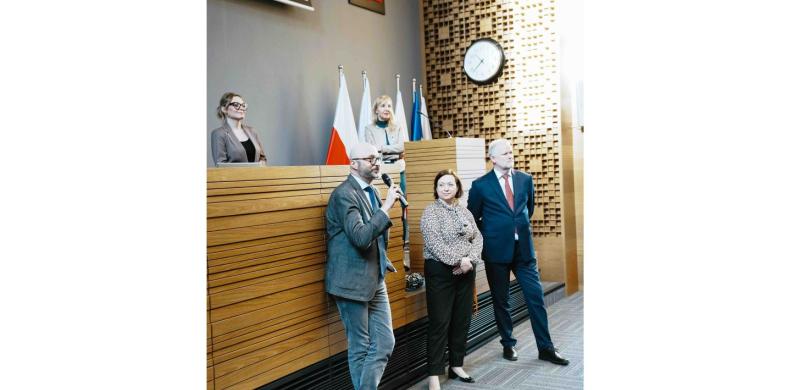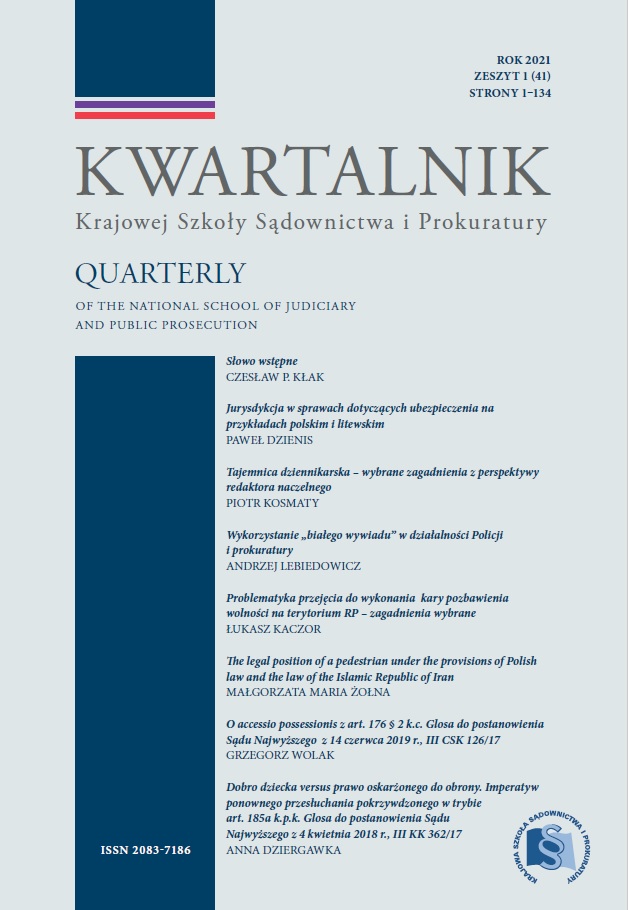Optymalny model uzasadnienia orzeczenia sądu – prezentacja wyników badań
Kwartalnik Krajowej Szkoły Sądownictwa i Prokuratury * 2021* tom 44* zeszyt 4* s. 97-111 * ISSN 2083-7186 Optymalny model uzasadnienia orzeczenia sądu – prezentacja wyników badań The optimal model of reasons of a court judgment – presentation of research result Dr Paweł Zdanikowski, sędzia Sądu Rejonowego Lublin-Zachód w Lublinie, kierownik Działu Badań i Analiz KSSiP, adiunkt w Katedrze Prawa Handlowego Katolickiego Uniwersytetu Lubelskiego Jana Pawła II, ORCID: 0000-0002-2383-5401 Dr Janusz Konecki, sędzia Sądu Rejonowego Lublin-Wschód w Lublinie z siedzibą w Świdniku, główny specjalista w Dziale Badań i Analiz KSSiP, del. do Sądu Okręgowego w Lublinie, ORCID: 0000-0002-3226-6650 Aleksandra Pietrzak, zastępca kierownika Działu Badań i Analiz KSSiP Rafał Nozdryn-Płotnicki, prokurator Prokuratury Rejonowej Lublin-Północ w Lublinie, główny specjalista w Dziale Badań i Analiz KSSiP DOI: 10.53024/6.4.44.2021 URL: https://www.kssip.gov.pl/pobierz_plik/06_zdanikowski.pdf SUMMARY: The article presents the results of the research project „In search of an optimal model of reasons of a court judgment”, implemented in 2018-2021 by the National School of Judiciary and Public Prosecution. As part of the project, two model (standard) reasonings (in a civil and criminal case) were developed in two groups of judges composed of more than a dozen persons each, with the participation of linguists. As a result, a certain model (exemplar) of reasoning was created, which differs from the „traditional” in that, it has a very limited (made of several sentences) „historical” part, is written with the use of indents dividing structurally separate parts of the reasonings and is communicatively formulated (without commonly incomprehensible, sometimes archaic expressions, complex sentences, using references to literature and jurisprudence only to the necessary scope). Then, surveys of the opinions of civil and criminal judges were conducted, which allowed to answer the question of how judges assess the model reasons developed as a part of the project in terms of: a) compliance with: Art. 3271 /art. 424 of the Code of Criminal Procedure, b) communicativeness – comprehensibility for all participants in the proceedings, also for those who do not have legal education, c) clarity (the form of reasons with use of points), d) brevity, e) linguistic correctness, f) correct text editing, g) overall assessment. As the legal status partially changed during the project implementation (the obligation to prepare reasons on forms in criminal cases was introduced), the research also covered the opinions of criminal judges with regard to the reasons forms. This text presents the results of both studies. Key words: reasoning of a court decision, reasoning’s form, model of reasoning Bibliographic Citation: ZDANIKOWSKI, P., KONECKI, J., PIETRZAK, A., NOZDRYN-PŁOTNICKI, R. Optymalny model uzasadnienia orzeczenia sądu – prezentacja wyników badań, Kwartalnik Krajowej Szkoły Sądownictwa i Prokuratury. 2021, t. 44, z. 4, s. 97-111. ISSN 2083-7186. DOI: 10.53024/6.4.44.2021 |
|




